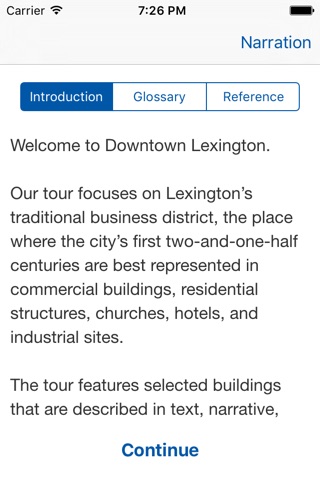
LexArch Tour: The Inquisitive Walker’s Guide to Lexington’s Downtown Architecture app for iPhone and iPad
Developer: City of Lexington
First release : 16 Oct 2015
App size: 25.47 Mb
The Inquisitive Walker’s Guide to Lexington’s Downtown Architecture – or LexArchTour –offers an architectural tour of Lexington’s traditional business district, the place where the city’s first two-and-one-half centuries are best represented in commercial and public buildings.
The tour features selected buildings that are described in text, audio narrative, and photographs. Building descriptions include date of construction, architect or builder, style, and purpose or use. Photographs record and interpret building design detail and general context. The guide also provides detailed information on each structure, its surroundings, how the structure has been used, and, where appropriate, commentary on the building’s larger context.
Accompanying maps will assist you in locating streets, buildings, and viewpoints. A short Bibliography is included for those interested in our references and further reading. The mobile app also includes a short Glossary, which lists selected terms used by brick and stone masons and other craftspeople in specifying structural components.
Version 1 of the Inquisitive Walker’s Guide features covers 13 downtown buildings. It begins at the Old Courthouse, travels northeast to the Warfield and McClelland buildings at the corner of Upper and Short streets, turns west to cross Short Street until Mill Street and then moves south to traverse the Cheapside Plaza buildings from the Cheapside Bar to the Lexington City Bank building at West Main Street. In full compass these 13 buildings represent a rich array of architectural styles.
Plans for Version 2 include an expansion of the tour’s scope – to more than 30 downtown buildings – as well as the inclusion of archival photographs of buildings to show change over time.
In addition to identification, this guide seeks to enhance the way we see things. It is about translating common, everyday landscapes so that we may glean from them some appreciation of the lives and talents of the people who designed, built, and occupied them.
For more than two centuries, downtown commerce has been conducted in structures designed by talented architects and erected by skilled craftspeople. As long as these structures stand, they will continue to “tell a story” of past and present times and people.


